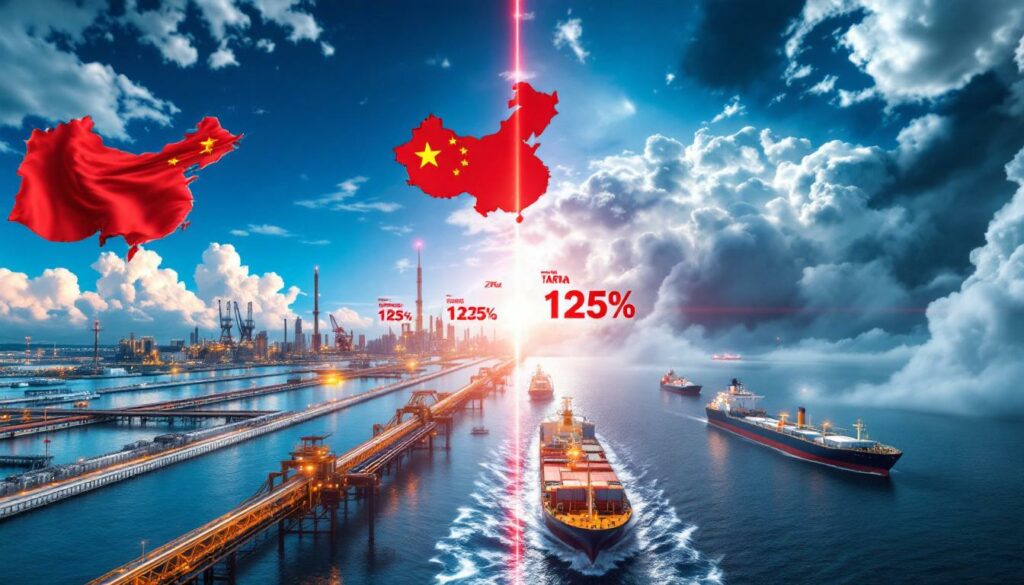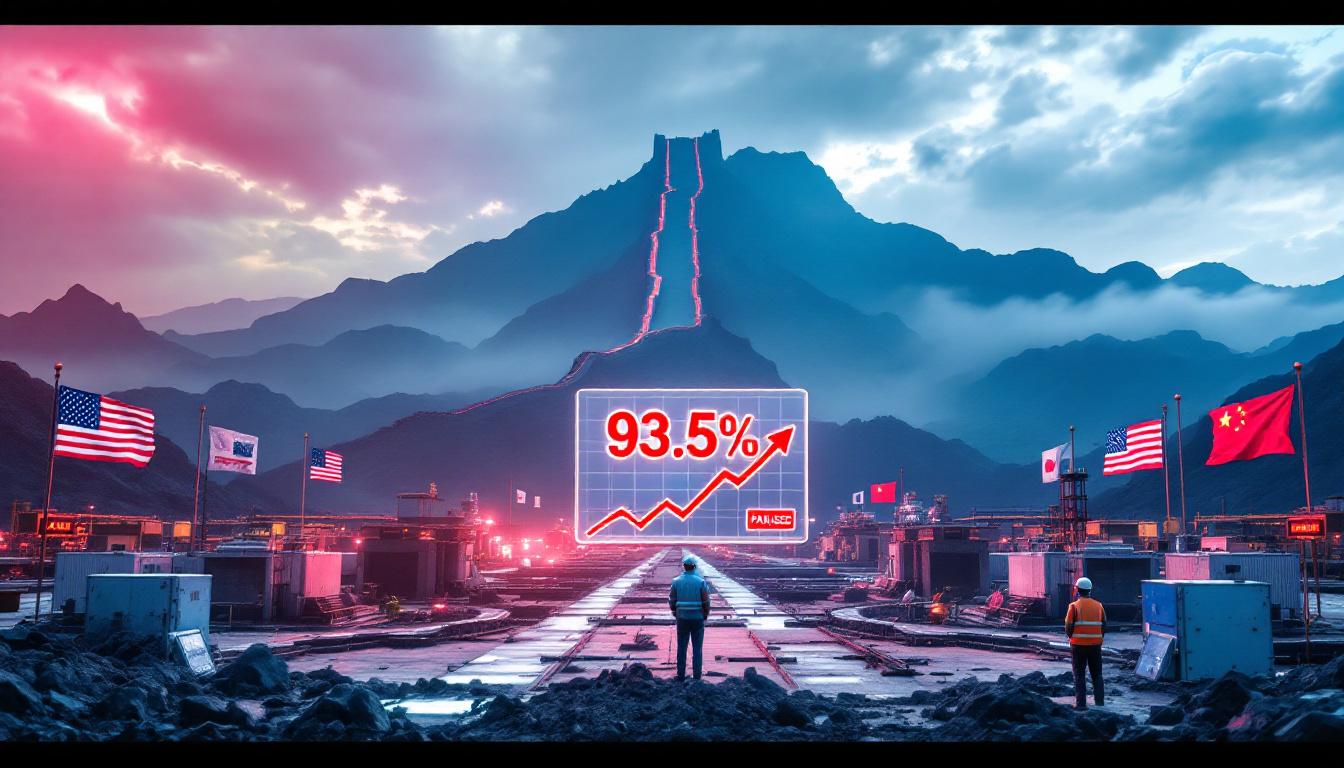China Ditches U.S. LNG as Russian Pipelines and Domestic Output Surge
China's dramatic shift away from U.S. liquefied natural gas (LNG) marks a significant transformation in global energy trade patterns. Once poised to become a cornerstone customer for American LNG exports, China has steadily reduced its reliance on U.S. supplies while strengthening ties with alternative sources—primarily Russian pipeline gas and its own growing domestic production.
This strategic realignment reflects broader geopolitical tensions and China's evolving energy security priorities. By diversifying supply chains and reducing dependence on maritime LNG shipments, Beijing aims to insulate its economy from potential supply disruptions and price volatility, which has implications for the US-China trade war implications.
The Evolution of China's LNG Import Strategy
From Market Leader to Strategic Reducer
China's ascendance to become the world's largest LNG importer in 2021 represented a milestone in global energy markets. According to the U.S. Energy Information Administration, China surpassed Japan that year, accounting for over 40% of Asia's total LNG import growth.
This achievement marked the culmination of years of aggressive infrastructure development, with China rapidly constructing LNG import terminals along its coastline to meet surging demand from industrial expansion and coal-to-gas switching policies.
However, recent years have witnessed a strategic pivot. China has tempered its LNG appetite while systematically expanding alternative supply channels—most notably pipeline imports from Russia and Central Asia alongside ambitious domestic production targets.
Import Patterns Show Structural Change
China's LNG import profile reveals a nuanced picture of strategic diversification. In 2023, China imported approximately 71.8 million tonnes of LNG, accounting for roughly 22% of global LNG trade, according to the International Gas Union's World LNG Report.
This represented a significant market position, yet the composition of these imports tells a revealing story:
- Australia remained the largest supplier at approximately 34%
- Qatar provided roughly 23% of China's LNG
- Russian LNG contributed around 11%
- Malaysian exports accounted for approximately 10%
Notably, U.S. supplies have faced increasing headwinds despite earlier expectations that American exporters would capture significant Chinese market share following the Phase One trade agreement signed in January 2020. This shift has impacted the US natural gas forecast significantly.
Drivers Behind China's Pivot Away from U.S. LNG
Domestic Production Renaissance
A key factor in China's reduced LNG appetite has been its remarkable success in boosting domestic natural gas output. According to China's National Bureau of Statistics, domestic production reached 384.8 billion cubic meters in 2023, representing significant year-over-year growth.
This production surge stems from several developments:
- Accelerated exploration and development of conventional gas fields
- Technological breakthroughs in extracting tight gas resources
- Enhanced recovery techniques in mature fields
- Strategic investments in shale gas extraction capabilities
As domestic supply security improves, China gains leverage in international negotiations and reduces exposure to global market volatility.
Russia's Pipeline Offensive
Perhaps the most consequential shift in China's gas supply portfolio has been the rapid expansion of pipeline imports from Russia. The Power of Siberia 1 pipeline, inaugurated in December 2019, has steadily increased throughput and is designed to reach its full capacity of 38 billion cubic meters annually by 2025, according to Gazprom's official statements.
This pipeline connection offers several strategic advantages:
- Eliminates maritime chokepoint vulnerabilities affecting LNG shipments
- Provides price stability through long-term contracts with formulaic pricing
- Deepens bilateral economic integration with Russia
- Reduces carbon emissions compared to LNG's energy-intensive liquefaction process
"The expansion of pipeline connections between Russia and China represents one of the most significant structural shifts in global energy markets," notes energy analyst Chen Wei. "Unlike LNG contracts, which typically have destination clauses and pricing linked to global benchmarks, pipeline gas offers greater price stability and supply security."
Geopolitical Calculations
Trade tensions between China and the United States have significantly influenced energy purchasing decisions. These tensions manifest through tariff policies, diplomatic frictions, and strategic hedging as both nations navigate their complex economic relationship.
China's energy procurement strategy increasingly reflects concerns about potential supply disruptions during periods of heightened geopolitical tension. By reducing dependence on U.S. energy exports, Beijing gains strategic flexibility while minimizing vulnerability to potential future sanctions or trade restrictions.
Economic Structural Changes
China's energy demand patterns are undergoing fundamental transformation as its economy matures. Several factors contribute to changing gas demand profiles:
- Slowing industrial growth rates as the economy shifts toward services
- Efficiency improvements reducing energy intensity across manufacturing sectors
- Challenges in the real estate sector affecting construction activity
- Technological transitions in key energy-consuming industries
These structural shifts have tempered overall energy demand growth projections, allowing China greater selectivity in supply sourcing.
Global Market Implications
Price Impact and Market Rebalancing
China's strategic shift creates ripple effects throughout global LNG markets. With Chinese buyers becoming more selective, suppliers must increasingly compete for market share, potentially exerting downward pressure on spot prices during periods of adequate supply.
This rebalancing affects multiple stakeholders:
- European buyers gain negotiating leverage with diversified supplier options
- Emerging Asian economies find more available cargoes
- U.S. exporters face pressure to secure alternative long-term offtake agreements
- Project developers must reassess investment decisions for new liquefaction facilities
The global LNG market's center of gravity continues shifting toward a more balanced supply-demand dynamic across multiple regional hubs rather than being predominantly driven by Chinese procurement decisions.
U.S. Export Strategy Recalibration
American LNG exporters have invested billions in liquefaction infrastructure partly predicated on capturing growing Chinese demand. The reduction in Chinese purchases necessitates strategic adjustments:
- Intensified focus on European markets seeking Russian gas alternatives
- Development of emerging markets in South and Southeast Asia
- Exploration of innovative contract structures to enhance competitiveness
- Integration with hydrogen initiatives to future-proof infrastructure investments
These adjustments represent significant challenges but also opportunities for agile market participants who can navigate the changing landscape. Many countries now face energy exports challenges similar to those confronting U.S. producers.
New Trade Patterns Emerging
As China ditches U.S. LNG and redirects its purchasing power, novel trade patterns are taking shape. LNG cargoes originally destined for Chinese terminals increasingly find homes in alternative markets, creating a complex reshuffling of global gas flows according to a recent Reuters analysis.
This redistribution affects shipping routes, terminal utilization rates, and pricing dynamics across multiple trading hubs. Market participants must adapt to these evolving patterns while managing portfolio risks.
China's Petroleum Transition Parallels Gas Shifts
Transportation Fuel Inflection Point
China's transformation extends beyond natural gas to petroleum products. The International Energy Agency has noted that China's transportation fuel demand patterns show signs of structural change rather than merely cyclical fluctuation.
This shift manifests in several key metrics:
- Electric vehicle sales reached 8.1 million units in 2023 according to the China Association of Automobile Manufacturers
- High-speed rail network expansion continues displacing short-haul air travel
- Urban planning increasingly emphasizes public transportation and reduced car dependency
- Efficiency standards for internal combustion engines continue tightening
These trends collectively suggest the possibility that China's petroleum consumption for transportation may plateau earlier than previously forecast—a development with profound implications for global oil markets.
Refining Sector Adaptation
China's massive refining sector faces the dual challenge of adapting to changing domestic demand patterns while pursuing international expansion. Several strategic shifts are underway:
- Increased focus on high-value petrochemical production rather than transportation fuels
- Strategic investments in refining assets throughout Asia and Africa
- Enhancement of processing capabilities for diverse crude slates
- Integration of low-carbon technologies to reduce emissions intensity
These adaptations reflect recognition that China's energy transition will fundamentally reshape its petroleum product demand profile over the coming decades.
Long-Term Strategic Implications
Energy Security Redefined
China's approach to energy security has evolved from simply securing adequate supply to a more sophisticated strategy balancing multiple objectives:
- Source diversification to prevent overreliance on any single supplier
- Infrastructure redundancy to mitigate potential disruption risks
- Price optimization through portfolio management
- Carbon intensity reduction aligning with climate commitments
This multifaceted approach represents a maturation of China's energy security doctrine beyond volume-centric concerns toward a more comprehensive risk management framework, creating various energy transition challenges.
Acceleration of Energy Transition Dynamics
China's simultaneous reduction in LNG imports and petroleum consumption signals potential acceleration in the global energy transition timeline. By leveraging domestic renewable resources, expanding nuclear capacity, and pursuing aggressive electrification, China aims to reduce fossil fuel dependency while maintaining economic growth.
This transition creates both challenges and opportunities:
- Fossil fuel exporters face reduced long-term demand prospects
- Clean technology providers gain expanded market access
- Energy infrastructure requires significant reconfiguration
- International climate cooperation becomes increasingly essential
The pace and trajectory of this transition will significantly influence global investment patterns across the energy sector. Many mining operations are undergoing a renewable energy transition in response to these shifts.
Key Considerations for Market Observers
Supply Contract Implications
For LNG market participants, China's shifting procurement strategy raises important questions about contract structures and risk allocation. Traditional 20-year contracts with rigid destination clauses and oil-linked pricing face increasing scrutiny as buyers seek greater flexibility.
Market innovations likely to gain traction include:
- Shorter contract durations balancing security with flexibility
- Hybrid pricing mechanisms incorporating multiple indexes
- Reduced destination restrictions enabling cargo optimization
- Integration of carbon offset provisions aligning with sustainability goals
These contract evolution trends reflect fundamental changes in how LNG is valued and traded globally.
Technology and Infrastructure Considerations
The reconfiguration of China's gas supply chains necessitates significant infrastructure adjustments. Pipeline expansions, storage facilities, and distribution networks require continuous investment to accommodate changing supply patterns.
Technological developments accelerating this transition include:
- Advanced pipeline monitoring systems enhancing reliability
- Storage optimization technologies improving capacity utilization
- Smart grid integration enabling responsive demand management
- Digital trading platforms facilitating efficient market operation
These technological enablers will play crucial roles in determining which market participants successfully navigate the transitional period.
Outlook for Global LNG Markets
The restructuring of China's LNG procurement strategy represents a pivotal moment for global gas markets. While China remains an essential player, its role is evolving from growth engine to sophisticated portfolio manager, balancing multiple supply channels while pursuing domestic production and energy transition goals.
For market participants, this evolution necessitates strategic flexibility, technological adaptation, and continuous reassessment of investment priorities. Those capable of navigating this complex landscape while offering innovative solutions to China's evolving energy needs will find continued opportunities despite shifting market dynamics.
Disclaimer: This analysis involves forecasts and market projections that are inherently uncertain. Future energy trade patterns will be influenced by numerous factors including technological developments, policy changes, economic conditions, and geopolitical events that cannot be precisely predicted.
Want to Spot the Next Major Mineral Discovery Before the Market?
Discover how significant ASX mineral discoveries like De Grey Mining and WA1 Resources can generate substantial returns by exploring Discovery Alert's dedicated discoveries page, where our proprietary Discovery IQ model provides real-time alerts to position you ahead of the market.




